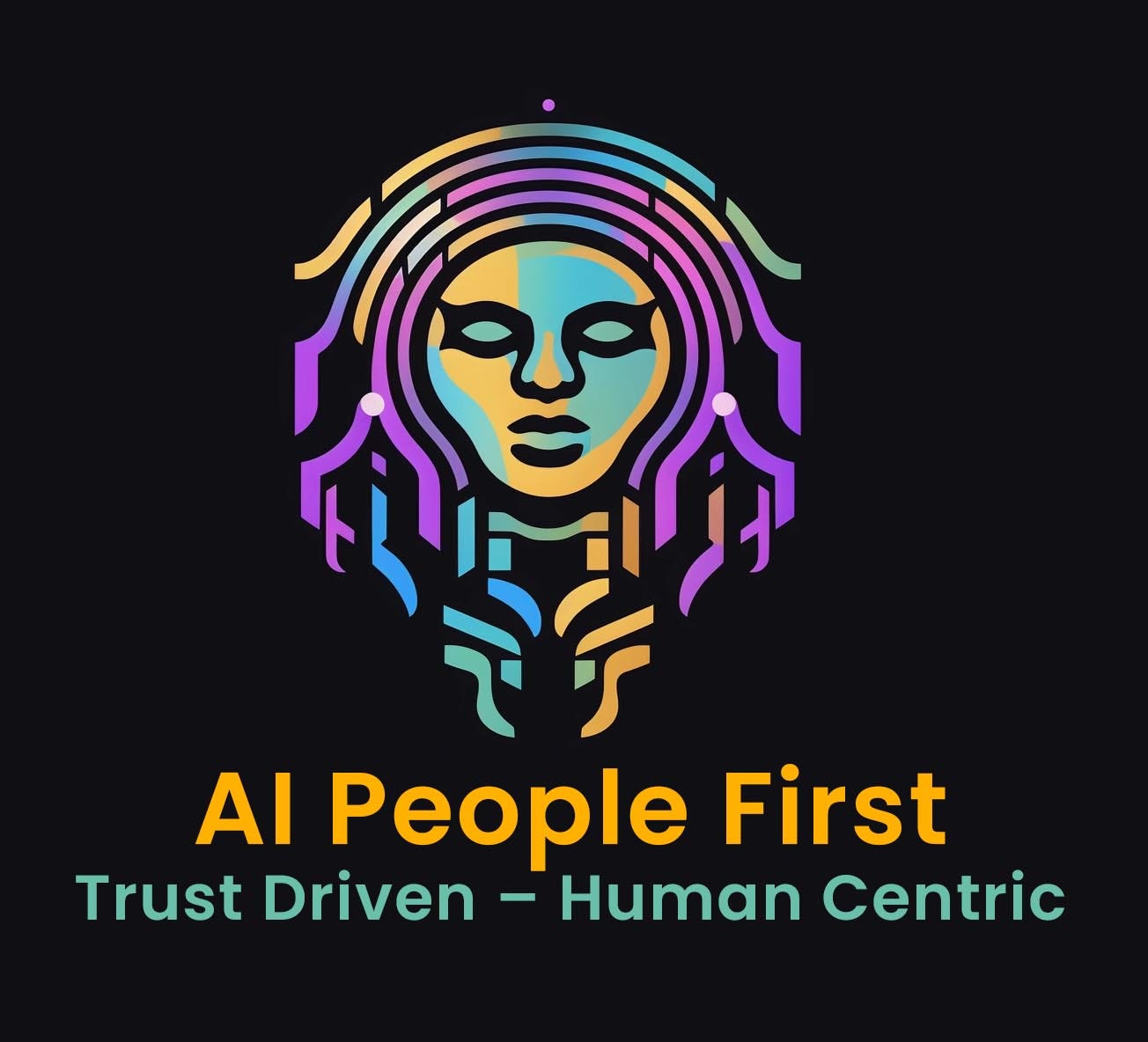Listen on Apple || Spotify || YouTube
New Dawn 2024 - The AI Content Game Uplevels this year…
I am about to tell you a true story. If you believe me, you will be rewarded. If you don’t believe me, I will make it worth your while to change your mind. Let me explain.
Imagine having a co-editor not just adept in grammar but also in understanding your audience's heartbeat, tailoring your message, and creating a resonant emotional connection.
00:00:00 True Story
00:00:10 Intro
00:00:51 Probabilities not content
00:02:00 Interactive training - prompts at site
00:03:14 What works
00:03:40 The Five Phases
00:04:51 My Scenario - Testing
00:07:01 Understanding the Audience
00:11:14 Personalizing Content
00:14:13 The Emotional Connection
00:15:06 Check our Bias(es)
00:17:04 Feedback driven Editing
That's what ChatGPT and GenAI offers, and in this episode, we explore how to harness its full potential.
The world of content creation is evolving rapidly, and GenAI is at the forefront, revolutionizing how we think about and execute content editing.
We begin with understanding our audience – a critical first step to ensure our content strikes the right chord. Then, we delve into personalizing our content, making it not just relevant but also relatable to our audience.
Emotional connection is next, where we use GenAI to create narratives that engage and resonate on a deeper level.
We also emphasize the importance of checking biases, ensuring our content is inclusive and resonant with a diverse audience.
Lastly, we explore feedback-driven editing, a dynamic process that keeps our content fresh, relevant, and engaging.
As we embark on this journey, remember, this is interactive learning.
We'll go through each of these steps together, exploring practical examples and effective prompts to refine your editing skills. So, grab your notes, and let's start this exciting exploration into the art of editing with GenAI!
ChatGPT and GenAI, in general, are about probability, not content or creativity.
Using them as editors instead of creators saves so much time and energy.
While 2023 was the year people created GenAI, my results kept me writing my content and using ChatGPT as an editor.
With custom instructions and training of the ChatGPT on my voice, I save time and less effort by creating ideas and writing first, then using GenAI to review, recommend, and send me in the right creative direction.
Instead of having ChatGPT create your content, this pod focuses on taking your content, getting editing feedback and direction, and completing the work you initiate and complete.
What’s shared below is the first outline of a course I’m writing, and I would love any/all feedback.
Unlocking GenAI’s Potential: Step into an immersive pod where you’ll learn the craft of constructing prompts for editing content.
Imagine conversing in a new language, where each word shapes the dialogue’s direction. We’ll dissect examples, spotlighting the power of precision in your prompts.
It’s not just about asking; it’s about asking right. This session transforms your approach from basic queries to strategic questions, ensuring you can tap into GenAI’s full capabilities.
Advanced Interaction Techniques: Dive deeper into the nuances of GenAI communication.
In this hands-on segment, you’ll experiment with directing GenAI toward varied outputs - from creative bursts to analytical insights.
It’s an interactive deep dive where theory meets practice. You’ll leave this pod with knowledge and a refined skillset, ready to engage GenAI more meaningfully and productively.
Talking with GenAI: 5 Editing Phases and Effective Prompts.
Understanding Audience: Before using GenAI for editing, explore the audience’s preferences, language style, cultural nuances, and interests. Create content that resonates deeply with them.
Personalizing Content: Customize GenAI’s editing based on the 2 T’s of GenAI, audience learning styles, and psychographics. Tailoring tone, vocabulary, and examples to match the audience’s expectations and experiences.
Emotional Connection: Dive into GenAI to create an emotional bond with the audience. Using narratives and language evokes positive emotional responses, aligning with the audience’s values and beliefs.
Check your Bias: Design content to be accessible and inclusive. GenAI checks that your language is clear and concise but also considerate and inclusive.
Feedback-Driven Editing: Continuously gather and incorporate audience feedback into the GenAI editing process. This ensures the content remains relevant and engaging to the intended readers.
MY SCENARIO
Bring either a completed work or 2000 words or more written content to be edited (Claude is better for more significant amounts of input and output even today).
NOTE: Sometimes, I will bring an outline and a few paragraphs to GenAI for review and directions before writing.
Get feedback on the direction, tone, and finished product from multiple points of view.
Focus on the headline, first few paragraphs, and closing paragraphs. Ask GenAI for feedback and read those out loud. Listen for what’s missing.
Role-Playing Sessions: Crafting the Perfect Query (Play Along by entering Prompts).
Real-World Simulations: Enter a dynamic world where GenAI becomes your go-to tool across diverse scenarios. These role-plays are tailored to mirror real-life situations.
Here, the challenge is to form questions that yield the most effective responses from GenAI. It’s an engaging, scenario-based teaching approach that adapts your questioning to suit varied needs.
Adaptable and Interactive Learning: Experience the impact of varied questioning styles and learn to interpret GenAI’s responses for optimal use.
Enhancing Editing with a People-First Approach Using GenAI:
Under the AI Hood
As you begin leveraging GenAI as an editor, here’s a few underlying pieces - learning styles and tone. Remember tone as we move through this short training below.
Thanks to: https://github.com/JushBJJ/Mr.-Ranedeer-AI-Tutor/blob/main/Guides/Config%20Guide.md
“Types of Configurations
Learning style
Visual
Verbal
Active
Intuitive
Reflective
Global
Tone Style
Encouraging
Neutral
Informative
Friendly
Humorous”
1. Understanding the Audience:
Start with a deep understanding of the audience’s needs and preferences.
Use GenAI to adapt language, style, and content that aligns with these insights, ensuring the writing resonates with the audience.
Audience Analysis: Start with
PROMPT: “What are common biases or concerns of [describe audience] regarding [topic]?”
This helps in identifying potential biases your audience might have.
Addressing Biases in Writing: Use,
PROMPT: “How can I address [specific bias] in my writing?”
This prompt aids in tailoring your content to acknowledge and counter these biases.
Perspective Check: Ask,
PROMPT: “Can you provide an alternative viewpoint on [topic] that [describe audience] might have?”
Understanding different perspectives helps in creating a more balanced argument.
Feedback on Tone: Use,
PROMPT: “Is the tone of this piece appropriate for an audience that might have [specific concern or bias]?”
Ensuring the tone is respectful and considerate can make your audience more receptive.
Challenge Preparation: Prompt with,
PROMPT: “What challenges can I anticipate from [describe audience]?”
Being proactive in addressing potential challenges strengthens your position.
Rephrasing questions can yield richer insights or alternate viewpoints on a topic. Here’s how this works:
Focus Shift: Rephrasing spotlights different elements of a topic.
Example: Shifting from “What are the risks of artificial intelligence?” to “How can artificial intelligence be used ethically?” changes the focus from potential dangers to ethical applications.
Encouraging Critical Thinking: A new phrasing triggers more profound thought and critical responses.
· Example: Instead of “What are the effects of climate change?” rephrase to
“How does climate change impact coastal ecosystems differently than inland ecosystems?”
Invite Detail: Being specific in rephrasing leads to detailed answers.
· Example: Altering “How do businesses grow?” to
“What strategies do startups use for scaling in competitive markets?”
narrows the focus to specific growth strategies.
Get Clear: Clearer rephrasing simplifies the response.
· Example: Change “Why is the economy important?” to
“What role does the economy play in the average person’s standard of living?”
New Perspectives: A reworded question alters the viewpoint.
Example: Instead of “What causes poverty?” ask
“How do social policies influence the incidence of poverty in urban areas?”
Avoiding Assumptions: Remove assumptions leading to biased or incomplete answers.
Example: Replace “Why do smartphones make us less social?” with
“What is the impact of smartphones on social behavior?”
Rephrasing uncovers new ideas, deepens analysis, introduces apparent angles, and avoids biases, leading to good discussions.
2. Personalizing Content:
Continually tailor GenAI’s editing parameters to suit the evolving tastes and interests of the target audience. This includes adjusting the tone, examples, and narrative techniques to keep the content engaging and relevant.
TLDR: The Essentials
Specificity: The more specific your question, the more targeted the response.
Context Matters: Providing details helps get accurate answers.
Simplicity: One question at a time avoids confusion.
Clarity: Clear language ensures understanding.
Realistic: Align questions with practical GenAI capabilities and knowledge.
Once I’ve written and rewritten it a few times, running it by temperature or Top_P setting is vital.
Setting ChatGPT’s Temperature: Introducing the ChatGPT API
https://www.genui.com/resources/chatgpt-api-temperature
“Temperature is a hyperparameter used in some natural language processing models, including ChatGPT, to control the level of randomness or “creativity” in the generated text.
Higher temperatures result in more diverse and unpredictable output.
Conversely, lower temperatures result in more conservative and predictable output.”
Top_p is an alternative to temperature sampling. 0.1 to 0.9 spectrum usually.
“Top-p introduces randomness through nucleus sampling. It’s the setting that decides how diverse your content can be.
Diversity vs. Determinism: A value closer to 0, like 0.2, can give you a wide range of diverse outputs. In contrast, a value closer to 1, like 0.9, will produce more deterministic and predictable content.” (rewrite top_p=0.1, for example)
Master Claude AI: 5 Settings to Transform Your AI Writing Game! Source
1. Be Specific and Clear
Pitfall: Vague or overly broad questions.
Example:
Poor: “Tell me about science.”
Better: “What are the latest advancements in renewable energy technologies?”
2. Include Relevant Context
Pitfall: Omitting essential details.
Example:
Poor: “Why isn’t it working?”
Better: “My laptop isn’t turning on after a recent software update. What could be the issue?”
3. Limit Multiple Questions in One Prompt
Pitfall: Asking too many questions at once.
Example:
Poor: “What is quantum computing, and can you explain its history, applications, and future prospects?”
Better: “Can you explain the basic principles of quantum computing?”
4. Avoid Ambiguity
Pitfall: Using ambiguous language or terms.
Example:
Poor: “How do I get better?”
Better: “What are some effective strategies for improving time management skills?”
5. Be Realistic in Expectations
Pitfall: Expecting answers beyond the scope of current knowledge or technology.
Example:
Poor: “Can you predict the stock market prices for next year?”
Better: “What factors influence stock market trends?”
6. Check for Assumptions
Pitfall: Basing questions on incorrect assumptions.
Example:
Poor: “Why does eating at night cause weight gain?”
Better: “Is there a correlation between eating late at night and weight gain?”
7. Use Proper Phrasing and Grammar
Pitfall: Poorly constructed sentences.
Example:
Poor: “Book good writing how?”
Better: “Can you recommend some strategies for effective writing?”
3. Emotional Connection:
Utilize GenAI to infuse empathy and relatability into the content. This involves crafting narratives that inform and emotionally connect with the audience.
Simplifying Terms: Ask,
“Can you rephrase these technical terms in simpler language?”
Ensuring Clarity: Use the Prompt,
“Can you suggest clarifying this explanation for a general audience?”
It aids in refining explanations to be more accessible.
Analogy Creation: Prompt with,
“Can you provide an analogy to explain this technical concept?”
Analogies can bridge the gap between complex ideas and the reader’s existing knowledge.
Readability Check: Ask,
“Is this section easy to read and understand for someone without experience?”
This helps in assessing and improving overall readability.
Feedback on Structure: Use,
“How can I structure this document to be more engaging for non-specialists?”
A well-structured document guides the reader smoothly through the content.
4. Check your Bias
Ensure that the content is inclusive, considering the diverse backgrounds of the audience. GenAI can assist in identifying and rectifying language that may inadvertently exclude or offend audience segments.
Excellent Prompts for Editing:
“Can you review this paragraph for clarity and conciseness?”
“Please check for any grammatical errors in these sentences.”
“Suggest a more engaging opening sentence for this article.”
“Can you improve the flow and transition between these two paragraphs?”
“Identify any passive voice usage in this section and suggest active voice alternatives.”
“Provide feedback on the tone and style of this piece to ensure it aligns with the audience.”
“Check for any inadvertent excluding or offensive segments and suggest alternatives.”
“Assess if the conclusion effectively summarizes the main points.”
Not So Good Prompts:
“Make this better.”
“Is this good?”
“Edit this.”
“What do you think?”
“Just look over it.”
These less effective prompts are vague and don’t specify what feedback or editing is needed.
Bias in a world with many points of view
Be Specific: Clearly state what kind of feedback you want – grammar, tone, structure, or style.
Break It Down: Instead of asking for an overall review, break your text into smaller parts or focus on specific aspects one at a time.
Iterative Process: Use the feedback to revise and ask for more specific improvements. Editing is often a multi-step process.
Openness to Suggestions: Be ready to consider the AI's different perspectives and suggestions.
Few Next Steps: Late Stage Edit with your Content
Initial Review: Start with a prompt like,
“Can you identify any obvious grammatical errors in this text?”
Focus on Structure: Next, ask,
“How can the structure be improved for better flow?”
Style and Tone: Then,
“Is the tone appropriate for my target audience?”
Specific Sections: Focus on particular parts, e.g.,
“How can the introduction be more engaging?”
Final Proofread: End with,
“Please do a final check for any small errors or inconsistencies.”
5. Feedback-Driven Editing
Regularly incorporate audience feedback into the GenAI editing process.
This creates a dynamic, interactive loop where the content evolves with the audience’s feedback and preferences.
By prioritizing the audience’s perspective and needs, this approach ensures that GenAI editing enhances the quality of writing and strengthens the connection with their readers.
Creative Writing Coach Example: GPT that gives Creative Feedback
Thank you for sharing your blog post headlines. Here's a brief assessment:
Strengths:
Engaging and Provocative: Your headlines are thought-provoking and designed to grab attention, which is key for blog posts.
Clear Focus on ChatGPT: You've successfully centered ChatGPT as the transformative tool in each headline, making your topic clear.
Variety in Structure and Language: The headlines exhibit a good range of structures and word choices, avoiding repetition and keeping the reader's interest.
Suggestions for Improvement:
Simplifying Language: Some headlines might benefit from simpler language for broader appeal. For instance, "Redefining Writing Standards: ChatGPT Goes Beyond the Norm to Deliver Editorial Excellence" could be simplified to "Redefining Writing: How ChatGPT Delivers Superior Editorial Quality."
Balancing Novelty and Clarity: While it's great to be innovative in your headlines, ensure they remain clear and easily understandable. For example, "Elevate Your Words: The Best Way to Enhance Writing is to Embrace the ChatGPT Revolution" could be more direct, like "Elevate Your Writing with ChatGPT's Revolutionary Tools."
Addressing the Reader Directly: Some headlines could be more engaging by directly addressing the reader. For example, "Transforming Writing: Most Believe in Traditional Methods, Discover How ChatGPT Revolutionizes It" could be rephrased to "Transform Your Writing: How ChatGPT Revolutionizes Traditional Methods."
Specific Feedback:
"New Dawn in Composition": This is a strong headline as it implies a significant shift in writing practices.
"Redefining Writing Standards": The phrase "goes beyond the norm" is impactful but could be more concise.
"Creative and Technological Fusion": This headline is intriguing and emphasizes the blend of creativity and technology, which is a compelling aspect.
"Raising the Bar in Modern Writing": This headline effectively contrasts the old and new, but might be more engaging with a direct appeal, like "How ChatGPT Raises the Bar in Modern Writing."
Overall, your headlines are dynamic and engaging, setting a promising tone for the content that follows. With slight adjustments for clarity and directness, they can become even more effective in attracting and retaining reader interest.






















